If you can afford it you should get the maximum total solar panel capacity your roof can fit. For example on my roof I have 24 x 390 watt Jinko Tiger panels for a total of 9.36kW (9360 watts) solar capacity.
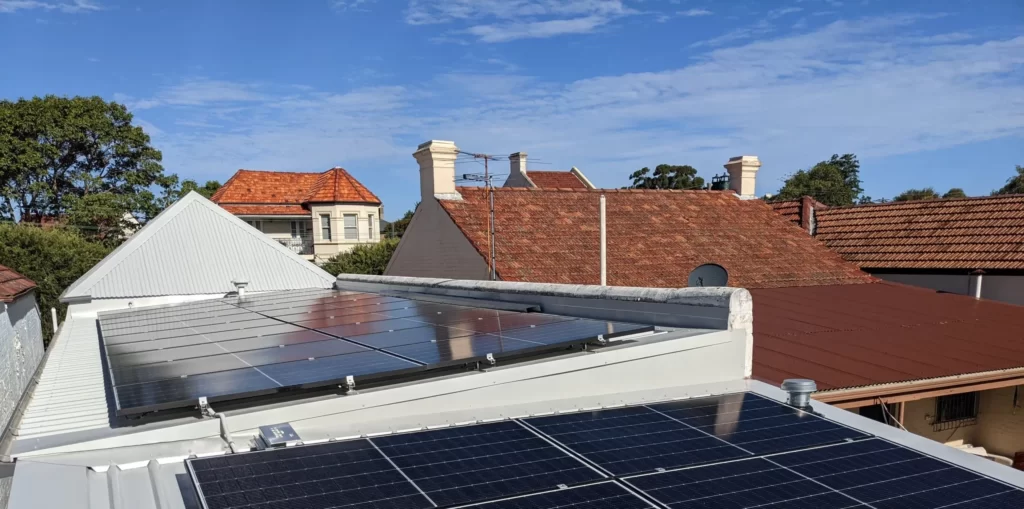
A solar system has 2 parts: the panels and the inverter. The solar panels convert sun power to DC (direct current) power. Your house uses AC (alternating current) power so the inverter converts DC power into AC power so it can be used by your lights, appliances etc.
My Sungrow SG8K-D solar inverter which converts the solar power to these panels is 8kW capacity so 8000 watts is the maximum amount of power my roof can generate in the middle of the day. Another good option at this capacity level is the Fronius Primo 8.2kW model.

If you’re unsure how much 8000 watts is, it’s enough to boil 3x 2400 watt kettles (7200 watts total) at once and still be only using your own solar power. This assumes the kettles are boiled in the middle of a perfectly sunny day when solar radiation is at its highest.
For maximum solar capacity you need solar panels covering as much of your available roof space as possible but they also need to be high output panels not low output ones.
Of course Jinko are not the only affordable high output panels at the moment, another big player is Trina with their 405 watt Vertex S panels. Do your research as there will be other options as well.
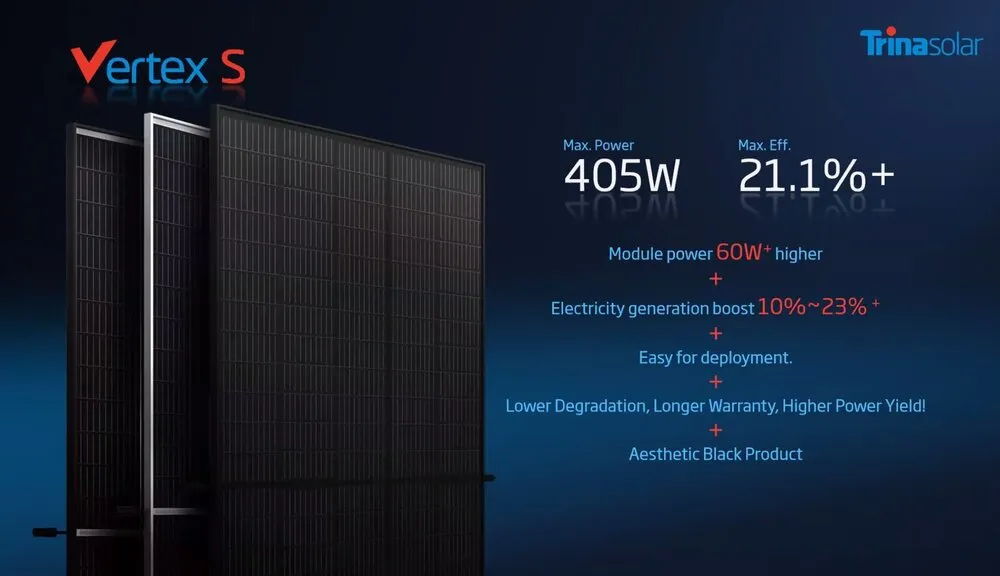
If I’d got lower output panels such as 330 watts, 24x 330w totals a much lower 7.92kW (7920 watts) vs 9.36kW (9360 watts), which would have resulted in much less solar generation capability on my roof.
Why I bought more than the 8kW capacity of my solar inverter will be explained in a later post. It actually makes sense to buy 1/3rd more total panel capacity than your inverter supports so if I had extra empty roof space I would’ve bought 27 panels instead, to total 10.53kW (8kW inverter x 1.31625).
Back to why you should get the maximum solar panel capacity your roof can fit … one big reason for doing this is so you have enough winter solar output.
If your solar system is under sized it will not generate enough to cover your electricity usage during the coldest darkest months of the year.
Solar Panels only output their maximum rated power during the middle of a clear Summer day when the sun is high above the horizon and the panels are unshaded by clouds, trees etc.
In Winter at their best they will generate about half of their capacity because the sun is low on the horizon and the number of sunny hours per day is much less.
On a Winter day 6th June in Sydney the graph below shows my panels were outputting about 60% of capacity in the middle of the day on a mostly cloudless day.
Since I have a high capacity solar system, apart from the darkest rainiest days in Winter I usually have enough Winter solar power being generated (orange on the graph) by my roof to use my own power for one high electricity use thing at a time like a clothes dryer or heater (yellow on the graph). Any solar power I don’t use gets sent back into the grid (blue on the graph).
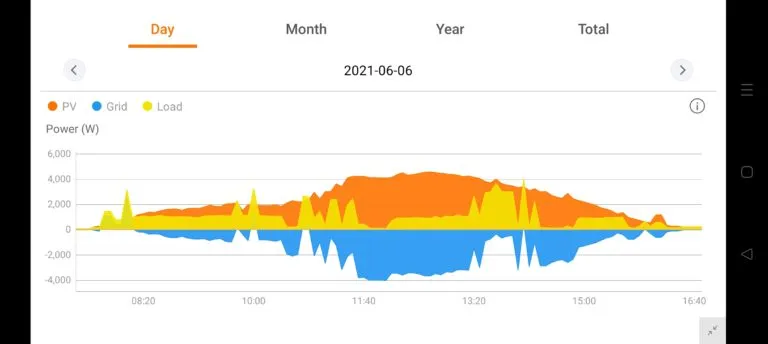
With your roof full of high output solar panels during Spring and Summer your panels will be at their best. You can see a few months later on my solar panels are generating a lot more power in the middle of the day about 91% of inverter capacity on October 18th.
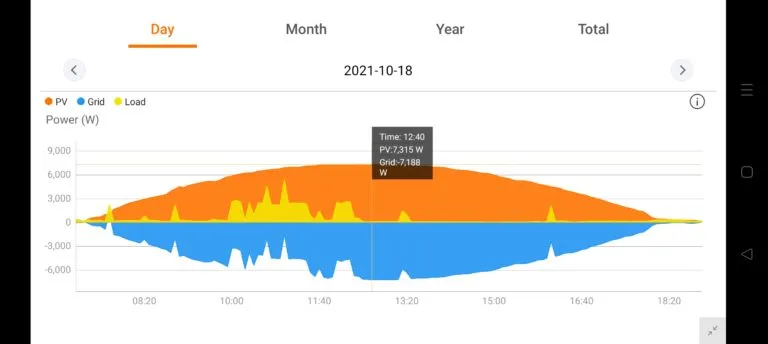
This means on Spring and Summer sunny cloud free days if I need to run several high electricity use appliances at once I can start them up in the middle of the day all at once and still be using my own power.
Ideally during those daylight hours you aren’t using pulling in any grid power from your electricity company at all, even if your aircon system/s are running for many hours in the middle of the day.
In the example below I was running a dishwasher on Fast cycle, a clothes dryer had a load of towels going and I was heating lunch in the microwave. All of these plus the usual low power things (lights, modems, smart speakers etc) were using 5.94kW (5940 watts) in total at the time I took this screenshot.
Since my panels were generating 6520 watts at the time I could run my whole house on my own solar power and still have a bit of solar generation left over to send back into the grid.
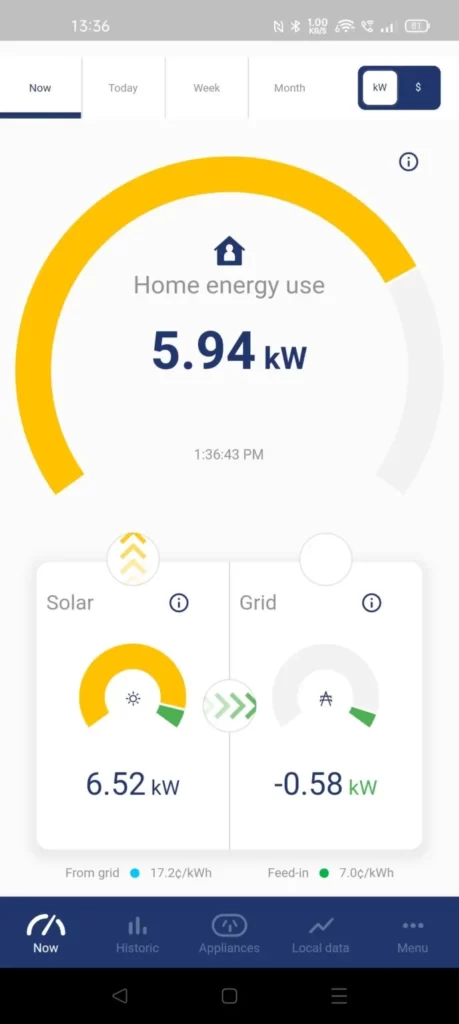
So what would’ve happened if I’d chosen a smaller capacity solar system on my roof eg: the popular combination of 6.6kW (6600 watts) of panels with a 5kW inverter?
Well the maximum generation at any given time would be 5kW (5000 watts) but as we now know that’s only during Spring/Summer around midday.
During Winter it would’ve generated at a peak of 2.5-3kW (2500-3000 watts) at best in the middle of the day and more like 1-1.5kW during mid morning and mid afternoon.
That’s barely enough just to power a microwave and much less than you’d need to run a load in the dryer or do an express dishwasher cycle. That’s not even mentioning running a heater or two.
Someone in that situation would have to use plenty of grid energy from their electricity company during Winter as well as their bit of own solar power, which is not ideal.
A well designed and placed large solar system covering your roof with high capacity panels means whether it’s Winter or Summer your solar system is usually generating enough power that your homes total electricity usage at any given time is less than your solar generation for most of daylight hours.

Leave a Reply